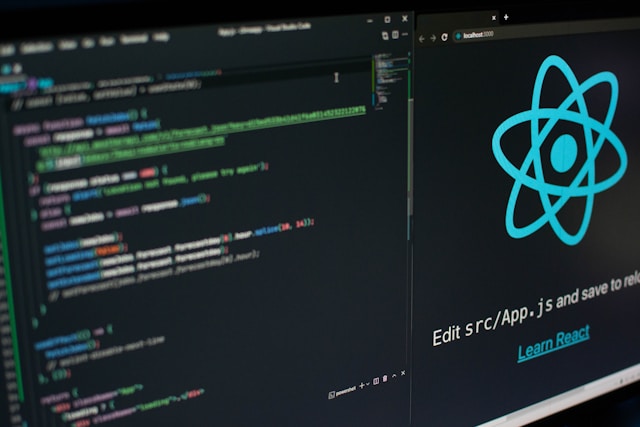Practical Guide to Offshore React Development

Building compelling, interactive user interfaces is non-negotiable for modern web and mobile applications. React, and its mobile counterpart React Native, have emerged as dominant forces in front-end development, empowering developers to create dynamic and performant UIs efficiently. However, accessing the skilled React talent needed to bring ambitious projects to life can be challenging and costly, especially in high-demand tech hubs. This is where exploring offshore React development becomes a strategic imperative for many businesses.
Why React and React Native Remain Front-End Favorites
Before diving into outsourcing, let's briefly touch upon why ReactJS and React Native are so prevalent. React revolutionized UI development with its component-based architecture. This allows developers to build encapsulated components that manage their own state, leading to reusable code, easier maintenance, and predictable behaviour. Its virtual DOM optimizes rendering performance, crucial for complex applications.
React Native extends these principles to mobile app development, enabling teams to build native-like iOS and Android applications using a single JavaScript codebase (for the most part). This significantly reduces development time and cost compared to building two separate native apps. The large, active community around both frameworks means constant innovation, abundant libraries, and readily available solutions to common problems. This robustness makes them prime candidates when considering ReactJS development outsourcing.
Advantages of Outsourcing React Development Offshore
Opting to outsource React JS development offers tangible benefits beyond the often-cited cost reduction. While accessing development expertise at more competitive rates is a significant factor, especially compared to North American or Western European markets, the advantages run deeper.
Specialized Global Talent
Tapping into specialized talent pools is a primary driver. Finding experienced React developers, particularly those proficient in TypeScript, modern state management libraries (like Redux, Zustand, or Recoil), testing frameworks (Jest, React Testing Library), and performance optimization techniques, can be difficult locally. Offshore locations, particularly regions with strong tech education systems and thriving developer communities like Latin America, offer a deep wellspring of skilled engineers. You gain access to specialists you might not find or afford otherwise when you outsource ReactJS development services.
Accelerated Development
Accelerated development cycles are another key benefit. An offshore partner can often assemble a dedicated React team faster than you could hire internally. This speed is critical when market opportunities are time-sensitive. Furthermore, some offshore models, particularly those leveraging time zone differences strategically, can facilitate near 24-hour development cycles, pushing projects forward while your local team sleeps.
Scalability and Flexibility
The flexibility to scale development capacity is invaluable. Project needs fluctuate. You might require a large team for an initial build, then a smaller one for ongoing maintenance and feature additions. React development outsourcing provides the capability to scale your development resources up or down quickly without the overhead associated with hiring and firing permanent staff. Your outsourcing partner handles resource management, allowing you to adapt to changing requirements seamlessly.
Focus on Core Business
Outsourcing also allows for a sharper focus on core business objectives. Managing an in-house development team requires significant time and resources – recruitment, onboarding, infrastructure, HR, and day-to-day management. Outsourcing frees up your internal leadership and technical staff to concentrate on strategic initiatives, product roadmap planning, market analysis, and core business growth, leaving the complex execution of React development to dedicated experts.
Choosing the Right Offshore React Development Partner
Selecting a partner for offshore React development is the most critical step. It’s not just about finding coders; it’s about finding a team that integrates with yours and delivers high-quality results. Look beyond the sales pitch and evaluate potential partners carefully.
Proven React Expertise
Don't settle for general web development experience. Scrutinize their portfolio specifically for complex React and React Native projects. Ask detailed questions about their experience with modern JavaScript (ES6+) and TypeScript, various state management libraries (Redux, MobX, Zustand, Context API), and routing libraries like React Router. Inquire about their familiarity with popular UI component libraries (Material UI, Ant Design, Chakra UI), testing frameworks (Jest, React Testing Library, Cypress), and build tools (Webpack, Vite, Parcel). Their knowledge of API integration (REST, GraphQL) and performance optimization techniques is also crucial. For React native development outsourcing, specifically ask about native module bridging, platform-specific UI guidelines (iOS Human Interface Guidelines, Android Material Design), build processes using Xcode and Android Studio, and experience with app store deployment.
Communication and Collaboration Protocols
Effective communication is paramount for offshore success. Understand precisely how daily interactions will occur. What tools will be central to collaboration (Slack, Jira, Teams, Asana)? Establish the frequency and format of check-ins. Assess their English proficiency – not just technical understanding, but fluent conversational ability is vital for clear requirement gathering, nuanced discussions, and effective feedback sessions. Gain clarity on their preferred development methodology (Agile/Scrum is common and often effective) and how they promote transparency through reporting and progress tracking. A partner located in a compatible time zone, like Argentina for US-based companies, significantly simplifies real-time collaboration.
Cultural and Process Alignment
Differences in work culture can create unnecessary friction. Look for a partner whose approach to work, communication style, and problem-solving methodologies resonates with your own team's culture. Do they value proactivity, transparency, and taking ownership? Understanding their internal development processes is essential – how do they handle code reviews? What are their quality assurance practices? What standards do they uphold for code quality? We find that a shared understanding of business goals, extending beyond mere technical tasks, leads to much better project outcomes. Our presence in both Argentina and New York helps bridge potential cultural gaps and align expectations effectively from the start.
Track Record and Case Studies
Don't just take their word for it. Request case studies directly relevant to your industry or the type of project you envision. More importantly, ask for client references and make the effort to speak with them directly. Inquire about the challenges faced during their projects, how the potential partner navigated those challenges, and the overall level of satisfaction with the process and the results. A strong portfolio demonstrates capability; satisfied clients confirm reliability and professionalism.
Location Considerations
While talent is global, location still influences the partnership dynamic. Time zone overlap is a significant practical factor impacting daily collaboration. Cultural affinity can smooth communication and build rapport more quickly. The legal and regulatory environment of the partner's country is also a relevant consideration. Latin America, particularly Argentina, presents a compelling combination: a deep pool of highly skilled tech talent, significant time zone overlap with North America, strong cultural ties, and competitive pricing. This makes it an attractive hub for ReactJS development outsourcing.
The Offshore React Development Workflow

Engaging outsource ReactJS development services typically follows a structured process, often based on Agile principles:
Step 1: Discovery and Planning
This crucial initial phase focuses on deep understanding and alignment. Expect intensive discussions to clarify your project goals, target audience, technical requirements, any existing infrastructure, and key success metrics. The typical output includes a detailed project scope, technical specifications, potentially wireframes or mockups, and a preliminary roadmap or product backlog.
Step 2: Team Setup and Kick-off
Based on the defined needs, the outsourcing partner assembles your dedicated React development team. A formal kick-off meeting serves to introduce team members, establish clear communication channels, clarify roles and responsibilities, and finalize the plan for the initial sprint.
Step 3: Iterative Development
Development usually proceeds in short, focused cycles (typically 1-4 weeks) known as sprints. Each sprint aims to deliver a specific, usable set of features drawn from the backlog. Daily stand-up meetings are standard practice to keep everyone synchronized on progress, identify any blockers, and confirm immediate next steps. Continuous communication via tools like Slack or Teams underpins the entire process.
Step 4: Code Reviews and Quality Assurance
Quality is integrated throughout the process. Code developed during each sprint undergoes rigorous peer reviews to maintain high standards of quality, consistency, and adherence to established best practices. Dedicated QA engineers conduct various forms of testing (functional, integration, regression, performance) continuously, not just as a final step before release.
Step 5: Deployment and Release
Once features are fully developed, thoroughly tested, and formally approved, they are deployed to staging or pre-production environments for final validation. Following successful staging deployment, the code is released to the live production environment. Your offshore partner often assists with or manages this deployment process.
Step 6: Ongoing Maintenance and Support
The relationship frequently extends beyond the initial launch. Many arrangements include provisions for ongoing support, including bug fixing, performance monitoring, security updates, and the development of new features based on user feedback and evolving business requirements.
Potential Challenges in Offshore Collaboration
While the benefits are substantial, approaching offshore React development realistically means anticipating potential hurdles and planning proactively to mitigate them.
Communication Gaps
Misunderstandings can arise across distances. Mitigation strategies include establishing crystal-clear communication protocols from day one, leveraging collaborative tools effectively for both synchronous and asynchronous updates, scheduling regular video calls for face-to-face interaction, fostering an environment where questions and clarifications are encouraged, and prioritizing partners with excellent English proficiency. Thorough documentation of requirements, decisions, and meeting outcomes also serves as a vital reference point. Choosing a partner in a compatible time zone drastically reduces communication friction.
Time Zone Differences
Time differences can be either a challenge or a strategic advantage. Mitigate potential difficulties by defining specific overlapping work hours dedicated to essential meetings and real-time collaboration. Utilize asynchronous communication tools effectively for updates that don't require immediate response. Some teams even leverage the time difference for enhanced productivity, enabling tasks like bug fixing or testing to occur overnight relative to your primary business hours. Opting for a nearshore location, such as Argentina for US-based companies, significantly minimizes time zone disparity.
Quality Control Concerns
Concerns about the quality of offshored work are common but manageable. Mitigation starts during the selection process: thoroughly vet the partner's technical capabilities and their internal QA processes. Stay actively involved by participating in sprint reviews and providing timely feedback. Insist on robust testing practices, including a healthy suite of automated tests (unit, integration, end-to-end). Clearly define acceptance criteria for all deliverables. For large-scale projects, initiating the partnership with a smaller, well-defined pilot project can be an effective way to build confidence and validate the partner's quality standards before a full commitment.
Security Risks
Protecting your intellectual property and user data is critical. Mitigation involves implementing strong Non-Disclosure Agreements (NDAs) at the outset. Verify that the partner adheres to recognized secure coding standards (e.g., OWASP Top Ten). Thoroughly review their data protection policies and procedures. Implement strict access controls, granting permissions only as needed (principle of least privilege). Depending on the project's sensitivity, consider conducting independent security audits.
React vs. React Native Outsourcing
While the fundamental principles of outsourcing remain consistent, React native development outsourcing introduces specific nuances that require attention.
You must confirm the partner possesses specific, demonstrable experience building, testing, and successfully deploying applications to both the Apple App Store and Google Play Store. This includes a deep understanding of their distinct submission guidelines, review processes, and common pitfalls.
Complex mobile applications often necessitate interaction with native device functionalities like the camera, GPS, contacts, or Bluetooth. Verify the partner's capability and experience in writing or integrating native modules effectively for both iOS (Swift/Objective-C) and Android (Kotlin/Java).
Mobile users demand high performance and a fluid user experience. The chosen partner must be adept at optimizing React Native applications specifically for mobile constraints. This includes ensuring smooth animations, minimizing load times, managing memory efficiently, and optimizing for battery consumption across a diverse range of devices and operating system versions.
The Argentinian Edge in React Development
As a company with deep roots in Argentina and a primary office in New York, we've experienced firsthand the strengths this region brings to offshore React development. Argentina boasts a highly educated workforce with a strong national emphasis on engineering and technology. Universities consistently produce skilled graduates proficient in the latest technologies, including React, React Native, and their extensive ecosystems.
Furthermore, the Argentinian time zone (typically GMT-3) provides substantial overlap with North American business hours (EST, CST, PST). This facilitates the kind of real-time collaboration – quick calls, shared working sessions, immediate feedback – that is often challenging with partners located in Asia or Eastern Europe. There's also a high degree of cultural affinity between Argentina and North America, which tends to simplify communication dynamics and foster smoother, more intuitive working relationships. When combined with competitive operational costs, this positions Argentina as a highly strategic location for businesses seeking high-quality, collaborative, and cost-effective React development outsourcing. Our New York presence further acts as a bridge, ensuring seamless communication, project management alignment, and a local touchpoint for our US-based clients, all backed by top-tier global talent.
Getting Started with Offshore React Development
Ready to explore the possibilities of leveraging offshore talent for your React projects? Here’s a practical, step-by-step approach:
Define Your Needs Clearly
Before engaging potential partners, invest time in documenting your project goals, the intended scope, high-level technical requirements, constraints, and budget expectations. A clear vision enables more effective evaluation.
Research Potential Partners
Identify companies specializing in React development with a demonstrable track record of success. Consider key factors like location (for time zone and cultural fit), team size and scalability, relevant industry experience, and client testimonials or reviews.
Shortlist and Interview
Narrow down your options to a few promising candidates. Conduct thorough interviews focusing on their technical depth, development processes, communication practices, and overall cultural fit with your organization. Prepare specific questions based on the considerations outlined earlier in this guide.
Request Proposals and Case Studies
Ask your shortlisted partners to provide detailed proposals. These should outline their recommended approach, proposed team composition, estimated timelines, and preferred pricing models (e.g., fixed price, time & materials, dedicated team). Carefully review case studies that align closely with your project type or industry.
Consider a Pilot Project
Especially for larger or long-term engagements, initiating the relationship with a smaller, well-defined pilot project can be a prudent strategy. This offers a lower-risk opportunity to evaluate the partnership dynamics, communication flow, and quality of work before committing to a major undertaking.
Final Words on Offshore React Development
Offshore React development has evolved far beyond a simple cost-cutting tactic. It represents a strategic approach to accessing specialized global talent, accelerating project timelines, and gaining operational flexibility. By diligently selecting the right partner – one demonstrating proven technical mastery in React, employing robust communication protocols, and operating with processes that align with your own – businesses can confidently outsource React.js development services to build truly exceptional web and mobile applications.
